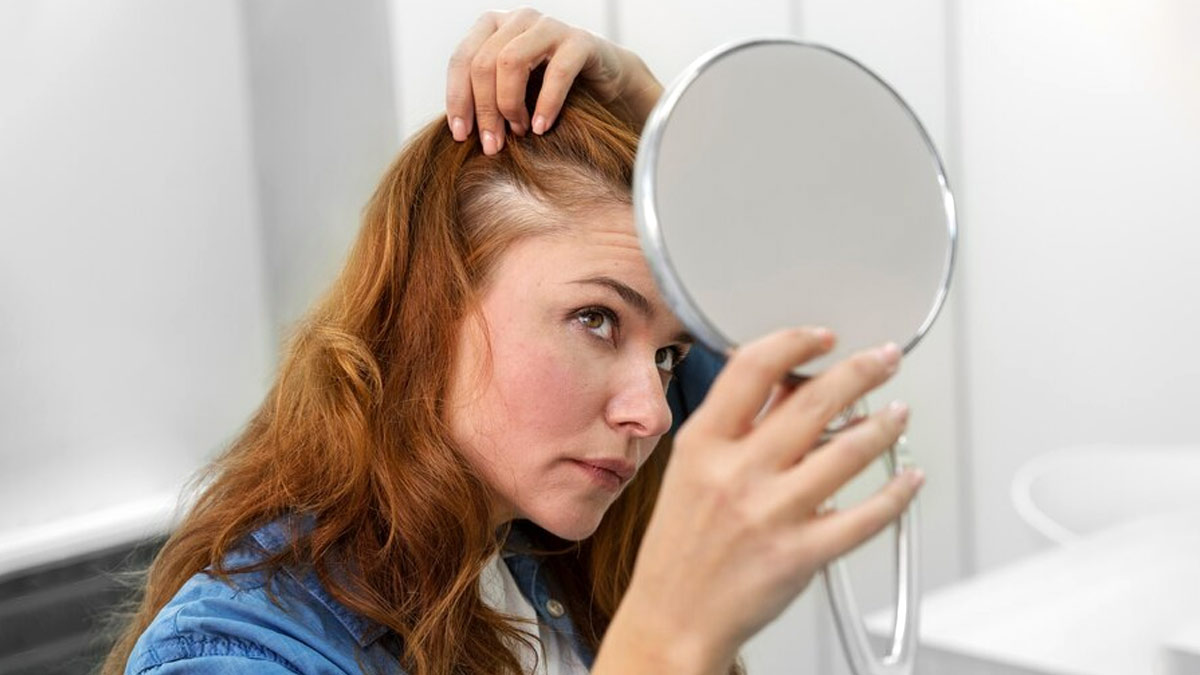
We've all noticed a few strands of hair in the shower or on our hairbrush, and that's completely normal. In fact, it's part of the natural hair growth cycle. But what happens when you start seeing more than just a few strands? When this happens, it can be alarming and confusing. Understanding the underlying causes of hair loss is essential, and that’s where proper diagnosis comes in. We spoke to Dr Atula Gupta, Dermatologist, Dermatosurgeon, Paediatric Dermatologist MBBS, MD-Dermatology, Venerology and Leprosy, who listed clinical evaluation for hair loss and how to diagnose it.
Table of Content:-

According to the American Academy of Dermatology Association (AAD), shedding between 50-100 hairs a day is normal. However, when the body loses significantly more hair each day, it is considered excessive hair shedding, medically known as telogen effluvium.
According to a 2017 study, hair loss has multiple causes, including genetic factors, medical conditions, medications, and nutritional deficiencies.
Clinical Evaluation

The first and most critical step when treating someone facing hair loss is a comprehensive clinical examination. Dr Guota listed the steps involved as follows:
- Medical History: History of any chronic illness, recent surgery, medications and family history should be reviewed which may pinpoint a specific reason for hair loss.
- Physical Examination: Scalp assessment can help a dermatologist understand the pattern, characteristics and extent of hair loss.
According to the Indian Journal of Plastic Surgery, the duration of hair loss helps in diagnosis. Conditions like Acute Telogen Effluvium (TE), which can be triggered by various factors, typically last less than six months. Acute hair loss is also noted in Alopecia Areata (AA) and Anagen Effluvium (AE). In contrast, chronic hair loss is associated with Pattern Hair Loss (PHL), scarring alopecia, and hair shaft disorders.
Also Read: Is Your Shampoo Causing Hair Loss? Watch Out For These Ingredients
Key Diagnostic Tests
Here are some tests that can help in diagnosing hair loss, as listed by the expert:

- Pull Test: The pull test helps understand the severity of hair loss. The dermatologist gently pulls a small section of hair (about 40-60 hairs) to see how many strands come out. Loss of more than 10% of the hairs points to active hair shedding commonly seen in conditions like telogen effluvium or anagen effluvium.
- Scalp Biopsy: A scalp biopsy provides a microscopic understanding of the hair follicles and scalp tissue. A small portion of the scalp tissue is removed and examined under a microscope. Scalp biopsy is a vital test in differentiating between scarring and non-scarring alopecia and is also an important test in diagnosing inflammatory scalp diseases and alopecia areata.
- Trichoscopy: Trichoscopy is a non-invasive imaging technique that allows a detailed visualisation of scalp skin and hair follicles aiding in the diagnosis of fungal infections, hair shaft abnormalities and androgenetic alopecia.
- Blood Tests: Blood tests including complete blood count (to detect anaemia), thyroid function tests (to diagnose hypo or hyperthyroidism, and hormone levels (to identify polycystic ovarian disease or PCOD) help to identify systemic causes of hair fall. Nutritional deficiencies like vitamin D, vitamin B12, and other nutrients should also be checked.
Also Read: Hair Loss Woes: Common Reasons Why Men Under 25 Experience Baldness And How To Stop It
Bottomline
Dr Gupta concluded, “Understanding and diagnosing hair loss involves a multifaceted approach combining clinical examination, physical tests and laboratory investigations all of which help to determine the exact cause of hair shedding. Each test can provide unique clues towards formulating an effective treatment strategy. If you are experiencing a hair fall, consultation with a dermatologist is crucial to receive appropriate guidance regarding treatments.”
[Disclaimer: This article contains information provided by an expert and is for informational purposes only. Hence, we advise you to consult your own professional if you are dealing with any health issues to avoid complications.]
Also watch this video
Read Next
Preventing Hair Fall In Monsoon: Here Are 5 Natural Hair Growth Infusions That You Can Make At Home
How we keep this article up to date:
We work with experts and keep a close eye on the latest in health and wellness. Whenever there is a new research or helpful information, we update our articles with accurate and useful advice.
Current Version